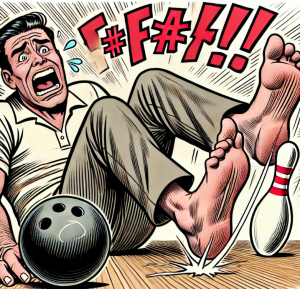
The Journey of Prosthetic Rehabilitation
Losing a limb is a life-altering event, but with the right prosthetic and support, people can regain independence and a sense of normalcy. Understanding what recovery truly means for those with prosthetic limbs is crucial. A recent study published in PLoS ONE sheds light on this by developing the ECLIPSE model—a framework that identifies the essential outcome domains from the patient’s perspective during prosthetic rehabilitation.
What is the ECLIPSE Model?
The ECLIPSE model stands for:
- Engagement in important activities and roles
- Control over how to participate
- Prosthetic usability and comfort
- Pain management
- Acceptance of the new normal
These domains highlight what truly matters to patients recovering from lower limb amputation and using prosthetics.
Why is This Important?
Traditionally, healthcare providers focus on clinical metrics to measure recovery, like how far someone can walk with their prosthesis. However, these measures often miss what patients value most in their recovery journey. The ECLIPSE model bridges this gap by centering on the patient’s lived experiences and what they find meaningful in their rehabilitation process.
Participating in Important Activities and Roles
Imagine you love gardening, and after losing a limb, you’re determined to get back to it. This domain emphasizes the importance of being able to return to activities that give life meaning and satisfaction. It’s not just about walking but being able to kneel in the garden, feel the soil, and plant seeds again. It’s about fulfilling roles—like being a parent who can play with their kids or a volunteer who can continue helping others.
Participating in the Way I Want To
It’s not just enough to engage in activities; how you do them matters. For instance, if you love swimming, it’s not just about getting into the pool but feeling the freedom and joy of moving through water without limitations. This domain recognizes that quality and ease of participation are crucial for a fulfilling life.
Prosthetic Usability and Comfort
A prosthesis is more than a tool; it’s an extension of the body. The ECLIPSE model underscores the importance of a prosthetic that is comfortable and easy to use. Think about wearing an ill-fitting shoe all day—it’s uncomfortable and limits what you can do. Similarly, a prosthesis must fit well, be easy to use, and have the right features to enable various activities, whether it’s a flexible ankle for running or a waterproof leg for fishing.
Managing Pain
Chronic pain can be a significant barrier to enjoying life. The ECLIPSE model emphasizes that effective pain management is a crucial aspect of recovery. It’s about ensuring that if pain is present, it’s manageable, allowing individuals to focus on living their lives rather than being hindered by discomfort.
Accepting the New Normal
Coming to terms with a new body image and lifestyle can be challenging. This domain is about psychological adjustment and accepting the changes that come with limb loss. It’s about finding confidence in a new appearance, feeling comfortable in social situations, and ultimately, embracing a new identity. This acceptance is pivotal in moving forward and finding joy in daily life.
Real-Life Implications
So, what does this all mean for someone with a prosthetic limb? Let’s take a look at how these domains play out in real life.
John’s Story
John, a retired firefighter, lost his leg in an accident. For John, meaningful recovery meant returning to his volunteer work at the local community center and playing with his grandchildren. His prosthetic needed to be comfortable enough for extended wear, allowing him to kneel and pick up his grandkids without pain.
When he first got his prosthesis, it was cumbersome and caused discomfort. But after working closely with his healthcare team, he found a prosthesis that was lighter and fit well, enabling him to participate in community events and family activities. Managing his pain through proper medication and exercises meant he could focus on what he loved, rather than being sidelined by discomfort.
John also faced challenges in accepting his new appearance. He felt self-conscious wearing shorts, but with time, support from peers, and positive interactions with others, he grew more confident. Now, he proudly shares his story to inspire others facing similar challenges.
Encouraging Engagement
The ECLIPSE model not only informs healthcare providers about what to focus on during rehabilitation but also empowers patients. By understanding what domains are important, patients can better communicate their needs and goals, ensuring a more personalized and effective rehabilitation process.
Join the Conversation
- What activities or roles do you think would be most important to regain after a significant life change?
- How do you think healthcare providers can better support patients in accepting and embracing their new normal?
Feel free to share your thoughts in the comments below!
Feed Your Curiosity
Discover the latest scientific research and inspiring discoveries with ‘This Week in Science’! Perfect for educators and avid learners, our free weekly newsletter is a rich source of knowledge to enhance your teaching and learning journey. Subscribe now!



